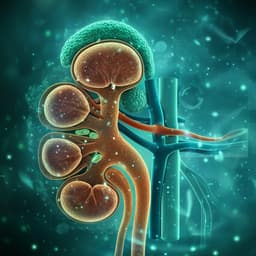
Medicine and Health
Modular stimuli-responsive hydrogel sealants for early gastrointestinal leak detection and containment
A. H. C. Anthis, M. P. Abundo, et al.
This innovative study introduces a modular intelligent suture support sealant patch that revolutionizes early leak detection and containment in gastrointestinal surgery. Conducted by a team including Alexandre H. C. Anthis and Maria Paulene Abundo, this patch provides reliable leak detection within a mere 15 minutes in gastric scenarios and within 3 hours in intestinal cases.
Playback language: English
Related Publications
Explore these studies to deepen your understanding of the subject.







